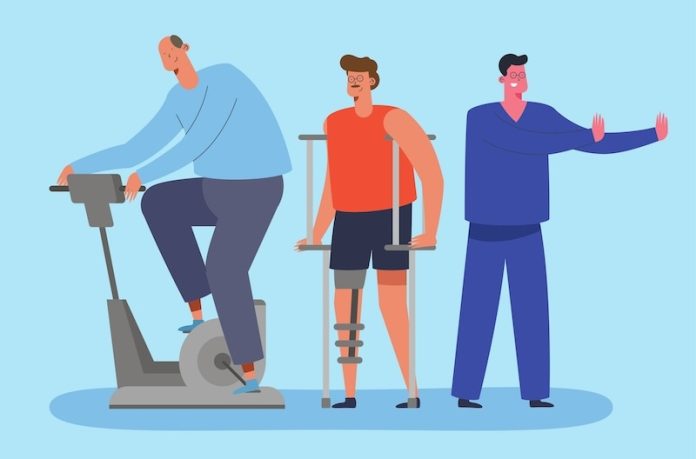
Stroke rehabilitation has entered a new era with the advent of innovative technologies designed to restore mobility, improve communication, and enhance the quality of life for survivors.
Traditionally, stroke recovery focused mainly on physical therapy and medication. However, recent technological advances offer promising new avenues for treatment, helping patients achieve better outcomes than ever before.
One of the most exciting developments in this field is the use of robotic therapy devices. These machines assist patients in performing repetitive movements, helping to retrain their brains and regain motor skills.
Robotic exoskeletons, for example, are wearable devices that provide mechanical assistance to limbs, allowing patients to perform movements that they wouldn’t be able to do unaided.
Research published in the Journal of NeuroEngineering and Rehabilitation demonstrates that patients using these devices can improve their walking speed and endurance over time, with improvements often surpassing those achieved through conventional therapy.
Virtual reality (VR) is another frontier in stroke rehabilitation. VR systems immerse patients in a computer-generated environment where they can practice real-world activities safely.
By engaging in simulated tasks, patients can work on everything from simple movements to more complex tasks like cooking or driving.
The interactive nature of VR also makes rehabilitation exercises more engaging and enjoyable, which can significantly boost motivation and adherence to treatment plans.
Studies have shown that VR can lead to improvements in arm and hand strength and dexterity, as highlighted in research from the Archives of Physical Medicine and Rehabilitation.
Another innovative approach is the use of non-invasive brain stimulation techniques, such as transcranial magnetic stimulation (TMS) and transcranial direct current stimulation (tDCS).
These technologies stimulate brain activity using magnetic fields or electrical currents, which can help enhance the brain’s ability to form new connections during the recovery phase.
A review in the American Journal of Physical Medicine & Rehabilitation found that these techniques, when used alongside traditional therapies, can accelerate improvement in motor functions, speech, and even cognitive abilities in stroke survivors.
Moreover, wearable technology and mobile health applications are increasingly being used to monitor patients’ progress and provide real-time feedback.
Devices like smartwatches and fitness trackers can monitor heart rate, activity levels, and sleep patterns, helping therapists tailor rehabilitation efforts to the individual’s daily performance and needs.
Mobile apps can also deliver personalized exercises, track progress, and facilitate communication between patients and healthcare providers, making rehabilitation a more integrated part of everyday life.
Tele-rehabilitation has gained traction, particularly highlighted during the COVID-19 pandemic, as it allows patients to receive therapy at home via video conferencing.
This method is not only convenient but also critical for those who live in remote areas or have mobility issues that make it difficult to visit a healthcare facility regularly.
Research indicates that tele-rehabilitation can be just as effective as in-person therapy for improving motor skills and functional abilities in stroke patients.
In conclusion, innovative technologies in stroke rehabilitation are transforming the landscape of recovery, providing new hope and possibilities for stroke survivors.
From robotic aids and virtual reality to brain stimulation and tele-rehabilitation, these tools are making rehabilitation more effective, engaging, and accessible.
As technology continues to evolve, it promises to further enhance the ability of stroke survivors to recover and regain their independence, making a significant impact on their lives and the lives of their families.
If you care about stroke, please read studies that diets high in flavonoids could help reduce stroke risk, and MIND diet could slow down cognitive decline after stroke.
For more health information, please see recent studies about antioxidants that could help reduce the risk of dementia, and tea and coffee may help lower your risk of stroke, dementia.
Copyright © 2024 Knowridge Science Report. All rights reserved.



